Papers by Luigi Maria Galantucci
Lecture notes in mechanical engineering, 2020
The use of general descriptive names, registered names, trademarks, service marks, etc. in this p... more The use of general descriptive names, registered names, trademarks, service marks, etc. in this publication does not imply, even in the absence of a specific statement, that such names are exempt from the relevant protective laws and regulations and therefore free for general use.
CRC Press eBooks, Sep 22, 2009

Elsevier eBooks, 1989
ABSTRACT An experimental study has been carried out to investigate the technological possibility ... more ABSTRACT An experimental study has been carried out to investigate the technological possibility of obtaining metastable copper alloys with high chromium percentages. These alloys, though having potential characteristics of extreme industrial interest, cannot be achieved with conventional methods owing to copper and chromium solid immiscibility. In order to do this a 500 W - CO2 Laser source has been used and an experimental plan based on the analysis of the influence of various process parameters (coating thicknesses, Laser energy transfer, pulse or continuous, covering gases and speed rate) upon the treatments, has been set up. Experimental results allow us to affirm that copper-chromium alloys with high chromium percentages are now possible by using low power Laser sources: pulse wave seems to be the most suitable, giving the greatest alloyed thicknesses and neglegible heat treated zones in the base metal. Further investigations are in progress on the possibility of adopting higher power Laser sources and other coatings to improve the metallurgical characteristic of the alloyed zone and to find the optimal technological process.
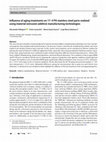
The International Journal of Advanced Manufacturing Technology, Feb 23, 2023
The most relevant criticalities of parts produced by material extrusion additive manufacturing te... more The most relevant criticalities of parts produced by material extrusion additive manufacturing technologies are lower mechanical properties than standard material performances, the presence of pores caused by the manufacturing method, and issues related to the interface between layers and rods. In this context, heat treatments can be considered an effective solution for tailoring the material behavior to different application fields, especially when using precipitation hardening stainless steels. In this work, aging treatments were conducted on parts realized using three different extrusion-based processes: Atomic Diffusion Additive Manufacturing, bound metal deposition, and fused filament fabrication. Two conditions of direct aging (H900 and H1150) were considered with the aim of comparing the response of properties in the opposite conditions of peak-aged and overaged. The hardness tests revealed that H900 aging significantly influenced hardness (max increase of 52%), and porosity (− 34.3% with respect to the as-sintered condition). On the other hand, the H1150 aging decreased the hardness (− 18% max) and porosity (− 32.2% max). Substantial differences among the microstructures due to grain size and δ-ferrite were illustrated. A statistical test was included to better highlight the influence of the heat treatment on the investigated properties.
Courses and lectures, 1996
Google, Inc. (search). ...
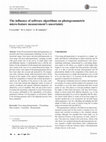
The International Journal of Advanced Manufacturing Technology, Aug 1, 2017
In the 3D reconstruction field, photogrammetry is a powerful and robust measurement technology fo... more In the 3D reconstruction field, photogrammetry is a powerful and robust measurement technology for lots of dimensional ranges, from macro and aerial photogrammetry to close-range and micro-photogrammetry, emerging recently with good results also in the survey of small object with sub-millimeter features. A fundamental issue is still the calibration, for the estimation of both internal and external parameters, mostly in the case of very small dimensional ranges. In previous works, some aspects of the photogrammetric process have been taken into account and analyzed by 3D comparisons with a reference model, while the present work is firstly focused on the outputs of the camera's alignment phase, in which the computation of internal and external parameters is carried out. By repetition of the process in the same conditions, it has been noticed that alignment results, in terms of camera coordinates and internal calibration parameters, are affected by a sort of variability. Thus, the aim of this work is to estimate the uncertainty component over the 3D reconstruction accuracy attributable to the repeatability of the photogrammetric software. For this purpose, several factors, linked to the shooting geometry and to the alignment process, have been considered.
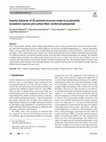
Progress in additive manufacturing, Jun 6, 2023
Parts with an auxetic structure, which exhibit negative Poisson's ratio, can be associated with a... more Parts with an auxetic structure, which exhibit negative Poisson's ratio, can be associated with a novel class of smart materials. Such interesting property has been widely explored, over the time, for different applications, i.e., medical, automotive, robotic and aeronautic field. However, the research about the design and analysis of auxetic behavior is still on the way. In this paper, a 2D re-entrant honeycomb structure was realized using material extrusion additive manufacturing technology. Two different materials, acrylonitrile butadiene styrene and carbon fiber-reinforced polyamide were adopted. The technique of digital image correlation was implemented during the tensile test to evaluate over the time and in different areas of specimens the strain behavior of the auxetic structure for both investigated materials. The measured negative Poisson's ratio confirmed the auxetic behavior of the designed structure. The comparison between the two investigated materials showed a different trend of negative Poisson's ratio.
CRC Press eBooks, Sep 22, 2009
Measurement Science and Technology, Oct 25, 2019
Users may download and print one copy of any publication from the public portal for the purpose... more Users may download and print one copy of any publication from the public portal for the purpose of private study or research. You may not further distribute the material or use it for any profit-making activity or commercial gain You may freely distribute the URL identifying the publication in the public portal If you believe that this document breaches copyright please contact us providing details, and we will remove access to the work immediately and investigate your claim.
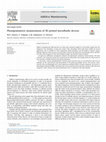
Additive manufacturing, May 1, 2018
Additive manufacturing (AM) processes are being more frequently applied in several fields ranging... more Additive manufacturing (AM) processes are being more frequently applied in several fields ranging from the industrial to the biomedical, in large part owing to their advantages which make them suitable for several applications such as scaffolds for tissue engineering, dental procedures, and 3D models to improve surgical planning. Moreover, these processes are particularly suited for the fabrication of microfluidic devices and labson-a-chip (LOC) designed to work with biological samples and chemical reaction mixtures. An aspect not sufficiently investigated is related to the dimensional verification of these devices. The main criticality is the texture-less surface that characterizes the AM products and strongly affects the effectiveness of most currently available 3D optical measuring instruments. In this study, a passive photogrammetric scanning system has been used as a non-destructive and low-cost technique for the reconstruction and measurement of 3D printed microfluidic devices. Four devices, manufactured with stereolithography (SLA), fused deposition modelling (FDM) a Stratasys trademark, also known as fused filament fabrication (FFF), and Polyjet have been reconstructed and measured, and the results have been compared to those obtained with optical profilometry that is considered as the gold standard.
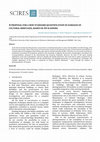
SCIRES-IT : SCIentific RESearch and Information Technology, Jul 11, 2018
In the field of Architectural Restoration, conservation is a fundamental matter to ensure the dur... more In the field of Architectural Restoration, conservation is a fundamental matter to ensure the durability of a built heritage, with historical and artistic values. The process of Conservation consists in the planning of series of interventions, preceded by an accurate phase of investigation about all the main aspects characterizing the artefact. Therefore, it is necessary to perform a preliminary assessment of the general conditions and, eventually, to appraise the presence of pathologies, according to the recommendations contained in the International and European Standards. However, the limit of the major existing legislations is the lack of quantitative criteria to identify and classify alterations. This work aims to make a proposal for an integration of the existing standards, with the identification of meaningful parameters in correspondence of damages. The example application of the study is conducted on Palazzo Palmieri (Monopoli-Italy), through the analysis of photogrammetric 3D models.

Metrology and Measurement Systems, Jul 26, 2023
In this work, authors investigated the effect of the Depth of Field (DoF) reduction, arising when... more In this work, authors investigated the effect of the Depth of Field (DoF) reduction, arising when the acquisition of small objects is carried out with a photogrammetry-based system using a Digital Single Lens Reflex (DSLR) camera and the structure from motion (SfM) algorithm. This kind of measuring instrument is very promising for industrial metrology according to the paradigms of the fourth industrial revolution. However, when increasing the magnification level, necessary for the reconstruction of sub-millimetric features, there is a corresponding decrease of the DoF, leading to possible effects on the reconstruction accuracy. Thus, the effect of the DoF reduction was analysed through the reconstruction of a well-known artefact: the step gauge. The analysis was conducted considering the theory behind the DoF concept, the analysis of the 2D images, input of photogrammetric reconstruction and, finally, the results in terms of dimensional verification of the reconstructed step gauge.
ESAFORM 2021, Mar 28, 2021
The objective of the present work is to study materials properties and performance of the footwea... more The objective of the present work is to study materials properties and performance of the footwear thread to develop and implement an analytical-numerical model capable of simulating their performance. The numerical results simulation was carried out, analyzing the sliding mechanisms of shoe-floor and evaluating the contact pressure and vertical stress. An experimental procedure, supported by a numerical model, was implemented for computing the evolution of the tangential force over several load increments.
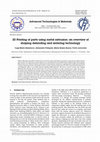
Advanced technologies and materials, Jun 15, 2022
Additive Manufacturing (AM) is the fabrication of real three-dimensional objects from plastics an... more Additive Manufacturing (AM) is the fabrication of real three-dimensional objects from plastics and metals by adding material, layer by layer. One of the most common AM processes is the Material Extrusion (ME) based on different approaches: plunger, filament and screw. Material Extrusion technologies of metal-polymer composites is expanding and it mainly uses the filament or plunger-based approaches. The feedstock used is a mixture of metal powder (from 55 vol% to about 80 vol%) dispersed in a thermoplastic matrix, as the Metal Injection Molding (MIM) materials. The process consists of three steps: shaping, debinding and sintering. The first step provides the extrusion of filament to realize a primary piece called "green part"; subsequent steps, debinding and sintering, allow to obtain a full metal part by dissolving the polymeric binder. The latter can be carried out using solvents, heat and the combination of them. The interest toward this technology is driven by the possibility to replace other Metal AM technologies, such as Selective Laser Melting or Direct Energy Deposition, in sectors like rapidtooling or mass production, with several benefits: simplicity, safety to use and saving material and energy. The aim of this keynote is to provide a general overview of the main metal ME technologies considering the more technical aspects such as process methodologies, 3D printing strategy, process parameters, materials and possible applications for the manufacturing of samples on a 3D consumer printer.
Additive manufacturing, Jul 1, 2022

Rapid Prototyping Journal, Aug 22, 2022
Purpose This paper aims to provide a comparison between the mechanical performance and microstruc... more Purpose This paper aims to provide a comparison between the mechanical performance and microstructural aspects of stainless steel 17-4 PH processed using, respectively, two technologies: atomic diffusion additive manufacturing (ADAM) and metal fused filament fabrication (MFFF). Design/methodology/approach Different tensile specimens have been printed using an industrial system and a consumer three-dimensional (3D) printer, varying two main 3D printing parameters. Mechanical and microstructural tests are executed to make a comparison between these two technologies and two different feedstock material, to identify the main differences. Findings These 3D printing processes make parts with different surface quality, mechanical and microstructural properties. The parts, printed by the industrial system (ADAM), showed lower values of roughness, respect those produced using the 3D consumer printer (MFFF). The different sintering process parameters and the two debinding methods (catalytic or solvent based) affect the parts properties such as porosity, microstructure, grain size and amount of δ-ferrite. These proprieties are responsible for dissimilar tensile strength and hardness values. With the aim to compare the performances among traditional metal additive technology, MFFF and ADAM, a basic analysis of times and costs has been done. Originality/value The application of two metal extrusion techniques could be an alternative to other metal additive manufacturing technologies based on laser or electron beam. The low cost and printing simplicity are the main drivers of the replacements of these technologies in not extreme application fields.



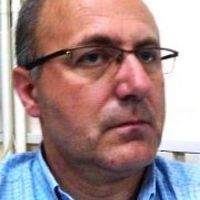

Uploads
Papers by Luigi Maria Galantucci